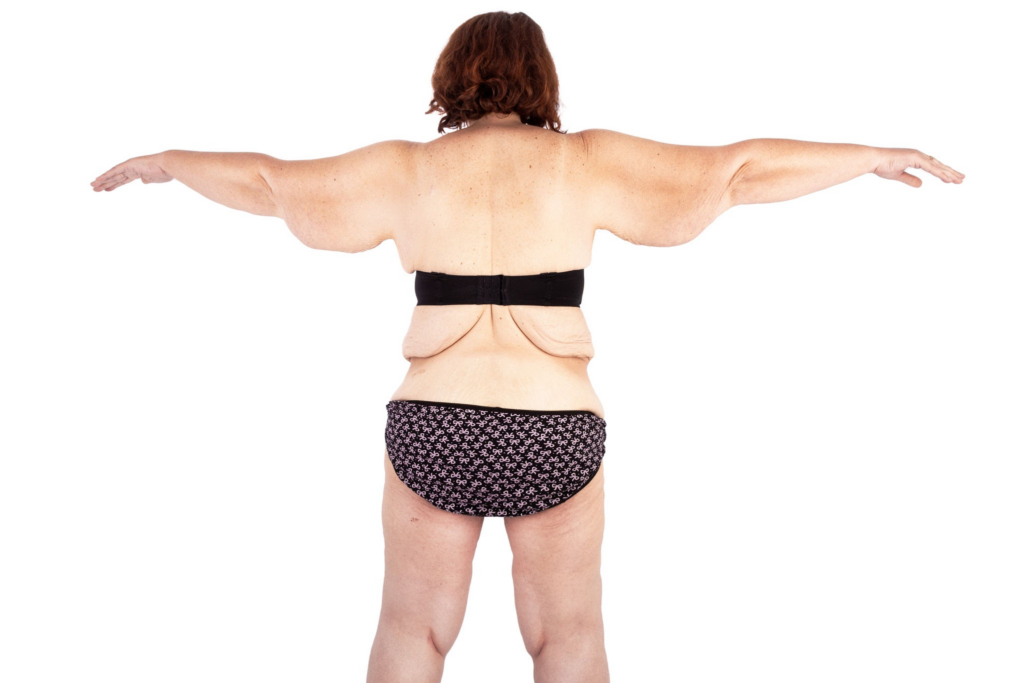A Mommy Makeover is a combination of plastic surgery procedures designed to help women restore their pre-pregnancy bodies. This typically includes a tummy tuck, breast lift or augmentation, and sometimes liposuction. Understanding the recovery time is crucial for anyone considering this transformative journey.
The recovery process can vary significantly from one individual to another, depending on factors such as the extent of the procedures, overall health, and adherence to post-operative care instructions. This introduction aims to provide a comprehensive overview of what to expect during the recovery phase of a Mommy Makeover.

جدول المحتويات
Understanding the Mommy Makeover
A Mommy Makeover addresses the physical changes that occur during pregnancy and breastfeeding. These changes often include:
- Excess skin and fat in the abdominal area
- Sagging or deflated breasts
- Stubborn pockets of fat in various areas of the body
The goal of a Mommy Makeover is to reverse these changes and help women feel more confident in their bodies. The procedures involved are tailored to each individual’s needs and goals.
الإجراءات الشائعة المتضمنة في عملية تجميل الأم
| إجراء | وصف | وقت التعافي |
|---|---|---|
| شد البطن | Removes excess skin and fat from the abdomen and tightens the muscles | 2-3 اسابيع |
| رفع الثدي (شد الثدي) | Raises the breasts by removing excess skin and tightening the surrounding tissue | 1-2 اسبوع |
| تكبير الثدي | Increases breast size through the use of implants or fat transfer | 1-2 اسبوع |
| شفط الدهون | Removes stubborn pockets of fat from various areas of the body | 1-2 اسبوع |
Importance of Understanding Recovery Time
Understanding the recovery time is essential for several reasons:
- Planning: Knowing the expected recovery time helps in planning time off work, arranging childcare, and organizing help with household tasks.
- Expectation Management: Having realistic expectations about the recovery process can help reduce anxiety and stress.
- Optimal Healing: Adhering to the recommended recovery guidelines ensures optimal healing and the best possible results.
Factors Affecting Recovery Time
Several factors can influence the recovery time after a Mommy Makeover:
Type and Extent of Procedures
The more extensive the procedures, the longer the recovery time. For example, a full tummy tuck will require more downtime than a mini tummy tuck.
Overall Health
Individuals who are in good health generally recover faster than those with underlying health conditions.
Adherence to Post-Operative Care
Following the surgeon’s instructions for post-operative care is crucial for a smooth recovery. This includes taking prescribed medications, avoiding strenuous activities, and attending follow-up appointments.
Comparative Analysis of Recovery Times
To provide a clearer picture, let’s compare the recovery times of different procedures typically included in a Mommy Makeover:
| إجراء | متوسط وقت التعافي | Factors Affecting Recovery |
|---|---|---|
| شد البطن | 2-3 اسابيع | Extent of muscle repair, overall health |
| شد الثدي | 1-2 اسبوع | Extent of skin removal, overall health |
| تكبير الثدي | 1-2 اسبوع | Type of implant, overall health |
| شفط الدهون | 1-2 اسبوع | Amount of fat removed, overall health |
A Mommy Makeover can be a life-changing experience, helping women reclaim their pre-pregnancy bodies and boost their self-confidence. However, it is essential to have a clear understanding of the recovery process to ensure a smooth and successful journey. By considering the factors that affect recovery time and following the surgeon’s instructions, individuals can achieve the best possible results.

Factors Affecting Recovery Time after a Mommy Makeover
Recovery time after a mommy makeover can vary significantly from one individual to another. Several factors influence how quickly and smoothly a person recovers. Understanding these factors can help patients set realistic expectations and plan their recovery process effectively.
Individual Variations
One of the primary factors affecting recovery time is individual variation. Each person’s body responds differently to surgery due to factors such as:
- Age: Younger patients often recover more quickly than older patients due to better overall health and faster cell regeneration.
- علم الوراثة: Genetic makeup can influence how well a person heals and recovers from surgery.
- Lifestyle: Factors such as diet, exercise, and overall health habits play a significant role in recovery.
Procedure Types
The type and extent of procedures included in the mommy makeover also impact recovery time. A mommy makeover typically combines several procedures, such as:
- Tummy Tuck (Abdominoplasty): This procedure involves the removal of excess skin and fat from the abdomen and the tightening of the abdominal muscles. Recovery can take several weeks.
- Breast Augmentation/Lift: These procedures enhance the size and shape of the breasts or lift them to a more youthful position. Recovery is generally shorter compared to a tummy tuck.
- شفط الدهون: This procedure removes excess fat from various parts of the body. Recovery time varies depending on the areas treated.
Comparison of Recovery Times for Different Procedures
| إجراء | متوسط وقت التعافي |
|---|---|
| شد البطن | 4-6 weeks |
| تكبير الثدي | 1-2 اسبوع |
| شد الثدي | 2-3 اسابيع |
| شفط الدهون | 1-2 اسبوع |
Health Conditions
Pre-existing health conditions can also affect recovery time. Patients with certain medical conditions may experience a longer recovery period. Some health factors to consider include:
- Chronic Conditions: Conditions such as diabetes, high blood pressure, or autoimmune diseases can slow down the healing process.
- تدخين: Smoking can impair blood flow and oxygen supply, leading to slower wound healing and increased risk of complications.
- Nutritional Status: Adequate nutrition is crucial for healing. Patients with poor nutritional status may experience delayed recovery.
Impact of Health Conditions on Recovery
| Health Condition | Impact on Recovery |
|---|---|
| Diabetes | Slower wound healing, increased risk of infection |
| High Blood Pressure | Increased risk of bleeding and bruising |
| Smoking | Impaired blood flow, slower healing, increased risk of complications |
| Poor Nutrition | Delayed healing, increased risk of infection |
Optimizing Recovery
To optimize recovery after a mommy makeover, it is essential to:
- Follow your surgeon’s post-operative instructions carefully.
- Maintain a healthy diet and stay hydrated.
- Avoid smoking and excessive alcohol consumption.
- Engage in light exercise as advised by your surgeon to promote blood circulation.
- Attend all follow-up appointments to monitor your progress.
Seeking Professional Guidance
Consulting with a qualified plastic surgeon can provide personalized advice and guidance on managing the recovery process. Regular check-ups and open communication with your healthcare provider can help address any concerns or complications promptly.
Typical Recovery Timeline
The recovery process after a surgery is a critical phase that requires careful management and understanding. This section provides a detailed timeline of the recovery process, from immediate post-op to full recovery. We will explore the various stages of healing, the necessary post-op care, and what to expect during each phase.
الرعاية الفورية بعد العملية الجراحية
Immediately after surgery, patients are typically moved to a recovery room where vital signs are monitored closely. This phase is crucial for stabilizing the patient and managing any immediate post-operative complications. Key aspects of immediate post-op care include:
- Pain management
- Wound care
- Fluid and medication administration
- Monitoring for signs of infection or complications
إدارة الألم
Effective pain management is essential in the immediate post-op phase. Pain levels can vary significantly depending on the type of surgery and the patient’s pain tolerance. Common methods of pain management include:
- Oral painkillers
- Intravenous (IV) pain medication
- Epidural anesthesia
| Pain Management Method | وصف | الايجابيات | سلبيات |
|---|---|---|---|
| Oral Painkillers | Prescribed medications taken orally | Easy to administer, Non-invasive | May cause stomach upset, Less effective for severe pain |
| Intravenous (IV) Pain Medication | Medications administered directly into the bloodstream | Quick onset of action, Effective for severe pain | Requires IV access, Risk of infection |
| Epidural Anesthesia | Medication injected into the epidural space in the spine | Provides regional pain relief, Effective for lower body surgeries | Invasive procedure, Risk of complications |
Wound Care
Proper wound care is vital to prevent infection and promote healing. This includes:
- Keeping the wound clean and dry
- Changing dressings as directed
- Watching for signs of infection
Early Healing Stages
In the early healing stages, the body begins the process of repairing damaged tissues. This phase typically lasts for the first few weeks post-surgery. Key aspects of this stage include:
- Inflammation
- Tissue repair
- Formation of new blood vessels
Inflammation
Inflammation is a natural response to injury and is a crucial part of the healing process. It helps to isolate the injured area and prevent the spread of infection. However, excessive inflammation can hinder healing. Managing inflammation through medication and rest is essential.
Tissue Repair
During tissue repair, the body produces new cells to replace damaged ones. This process is supported by adequate nutrition, hydration, and rest. Physical therapy may also be introduced during this stage to promote mobility and strength.
Intermediate Healing Stages
The intermediate healing stages focus on regaining strength and mobility. This phase can last for several weeks to a few months, depending on the type of surgery and the patient’s overall health. Key aspects include:
- Physical therapy
- Gradual return to normal activities
- Continued wound care
Physical Therapy
Physical therapy plays a crucial role in helping patients regain mobility and strength. A physical therapist will design a personalized exercise program to improve range of motion, flexibility, and strength. Regular follow-ups ensure progress is monitored and adjustments are made as needed.
العودة التدريجية إلى الأنشطة الطبيعية
Patients are encouraged to gradually return to normal activities as their strength and mobility improve. This includes resuming daily tasks, returning to work, and engaging in light exercise. It is important to follow the surgeon’s guidelines to avoid overexertion.
Late Healing Stages
The late healing stages focus on achieving full recovery and returning to pre-surgery levels of activity. This phase can take several months to a year, depending on the complexity of the surgery. Key aspects include:
- Full range of motion
- Complete tissue healing
- Return to full activity
Full Range of Motion
Achieving full range of motion is a significant milestone in the recovery process. This is typically accomplished through continued physical therapy and home exercises. Patients should be able to perform all necessary movements without pain or discomfort.
Complete Tissue Healing
Complete tissue healing involves the full regeneration of damaged tissues. This process can take time, and patients may still experience some residual effects. Proper nutrition, hydration, and rest continue to be essential during this phase.
Return to Full Activity
Returning to full activity is the ultimate goal of the recovery process. This includes resuming all pre-surgery activities, including work, exercise, and hobbies. Patients should consult with their surgeon before returning to full activity to ensure it is safe to do so.
Full Recovery
Full recovery is achieved when the patient has regained full mobility, strength, and function. This phase marks the end of the recovery process, and patients can resume their normal lives without restrictions. Key aspects of full recovery include:
- No residual pain or discomfort
- Complete healing of all tissues
- Return to all pre-surgery activities
No Residual Pain or Discomfort
Patients should experience no residual pain or discomfort at this stage. Any persistent symptoms should be discussed with the surgeon to rule out any underlying issues.
Complete Healing of All Tissues
All tissues should be fully healed, with no signs of inflammation or infection. Regular check-ups with the surgeon ensure that healing is complete and that there are no long-term complications.
Return to All Pre-Surgery Activities
Patients should be able to return to all pre-surgery activities without restrictions. This includes work, exercise, and hobbies. It is essential to maintain a healthy lifestyle to support long-term health and well-being.
Comparison of Recovery Times for Different Procedures
Recovery times for various procedures included in a mommy makeover can vary significantly. Understanding these differences is crucial for patients to plan their post-operative care effectively. Here, we compare the recovery times for some of the most common procedures typically included in a mommy makeover.
Factors Affecting Recovery Time
Several factors can influence the recovery time for each procedure, including:
- The extent of the procedure
- The patient’s overall health
- Post-operative care and compliance with doctor’s instructions
- Individual healing rate
Procedure Comparison
Let’s compare the recovery times for the following procedures:
- شد البطن
- تكبير الثدي
- رفع الثدي (شد الثدي)
- شفط الدهون
- Brazilian Butt Lift (BBL)
شد البطن
A tummy tuck involves the removal of excess skin and fat from the abdominal area and the tightening of the abdominal muscles. The recovery time for a tummy tuck is typically longer compared to other procedures due to the extent of the surgery.
- Initial recovery period: 2-3 weeks
- Full recovery: Up to 6 months
تكبير الثدي
Breast augmentation involves the placement of implants to enhance the size and shape of the breasts. The recovery time is generally shorter compared to a tummy tuck.
- Initial recovery period: 1-2 weeks
- Full recovery: Up to 6 weeks
رفع الثدي (شد الثدي)
A breast lift is designed to raise and firm the breasts by removing excess skin and tightening the surrounding tissue. The recovery time is similar to that of breast augmentation.
- Initial recovery period: 1-2 weeks
- Full recovery: Up to 6 weeks
شفط الدهون
Liposuction removes excess fat from specific areas of the body. The recovery time is generally shorter compared to more invasive procedures.
- Initial recovery period: 1 week
- Full recovery: Up to 4 weeks
Brazilian Butt Lift (BBL)
A Brazilian Butt Lift involves fat transfer to the buttocks to enhance their size and shape. The recovery time can vary but is generally longer due to the need to avoid pressure on the buttocks.
- Initial recovery period: 2-3 weeks
- Full recovery: Up to 8 weeks
جدول مقارنة وقت الاسترداد
| إجراء | Initial Recovery Period | Full Recovery |
|---|---|---|
| شد البطن | 2-3 اسابيع | Up to 6 months |
| تكبير الثدي | 1-2 اسبوع | Up to 6 weeks |
| رفع الثدي (شد الثدي) | 1-2 اسبوع | Up to 6 weeks |
| شفط الدهون | 1 اسبوع | Up to 4 weeks |
| Brazilian Butt Lift (BBL) | 2-3 اسابيع | Up to 8 weeks |
Post-Operative Care Tips
Regardless of the procedure, following these post-operative care tips can help ensure a smoother recovery:
- Follow your surgeon’s instructions carefully
- Attend all follow-up appointments
- Maintain a healthy diet and stay hydrated
- Avoid strenuous activities until cleared by your surgeon
- Wear any recommended compression garments
Understanding the recovery times for different procedures included in a mommy makeover is essential for patients to plan their post-operative care effectively. By comparing the recovery times and following post-operative care tips, patients can ensure a smoother and more comfortable recovery process.
Optimizing Recovery: Practical Tips for Patients
Recovery is a critical phase of any treatment or surgical procedure. Optimizing this process can significantly impact the overall outcome and quality of life for patients. Here are some practical tips to help patients enhance their recovery journey.
Understanding the Recovery Process
Before diving into the tips, it’s essential to understand the recovery process. Recovery typically involves several stages:
- Immediate Post-Procedure: This phase focuses on stabilization and managing immediate side effects.
- Short-Term Recovery: This period involves healing and regaining basic functions.
- Long-Term Recovery: This stage aims at returning to normal activities and maintaining overall health.
Tip 1: Follow Medical Advice Closely
One of the most crucial aspects of optimizing recovery is adhering to the medical advice provided by healthcare professionals. This includes taking prescribed medications on time, attending follow-up appointments, and following any specific instructions given.
Comparison: Home Remedies vs. Medical Advice
| Home Remedies | Medical Advice |
|---|---|
| May provide temporary relief | Offers targeted and proven treatments |
| Can be hit or miss | Based on scientific research |
| Might interact with medications | Considers all aspects of your health |
Tip 2: Maintain a Balanced Diet
Nutrition plays a vital role in the recovery process. A balanced diet rich in vitamins, minerals, and proteins can accelerate healing and boost the immune system. Consult with a dietitian to create a personalized meal plan that meets your specific nutritional needs.
Essential Nutrients for Recovery
- Protein: Crucial for tissue repair and muscle recovery.
- Vitamin C: Aids in collagen production and wound healing.
- Zinc: Supports immune function and tissue growth.
- Iron: Helps in blood production and prevents anemia.
Tip 3: Stay Hydrated
Hydration is often overlooked but is critical for recovery. Adequate water intake helps in flushing out toxins, maintaining bodily functions, and aiding in the absorption of nutrients. Aim for at least 8 glasses of water daily, unless advised otherwise by your doctor.
Tip 4: Engage in Gentle Exercise
Light exercise can improve blood circulation, reduce stiffness, and enhance overall well-being. However, it’s essential to start slow and gradually increase the intensity based on your comfort level and medical advice.
Benefits of Gentle Exercise
- Improves mood and reduces stress
- Enhances flexibility and strength
- Promotes better sleep
- Aids in weight management
Tip 5: Prioritize Sleep
Quality sleep is essential for recovery as it allows the body to repair and regenerate. Aim for 7-9 hours of uninterrupted sleep per night. Create a sleep-conducive environment by keeping your room dark, quiet, and cool.
Sleep Hygiene Tips
- Maintain a consistent sleep schedule
- Avoid caffeine and screens before bedtime
- Practice relaxation techniques like deep breathing or meditation
- Invest in a comfortable mattress and pillows
Tip 6: Manage Stress
Stress can impede the recovery process by affecting both physical and mental health. Incorporate stress management techniques such as mindfulness, yoga, or talking to a therapist to keep stress levels in check.
Stress Management Techniques
- Deep breathing exercises
- Progressive muscle relaxation
- Journaling
- Spending time in nature
Tip 7: Stay Connected
Social support is a powerful tool in the recovery process. Stay connected with friends and family, whether through visits, calls, or virtual meetings. Sharing your experiences and feelings can provide emotional support and motivation.
Benefits of Social Support
- Reduces feelings of isolation
- Provides emotional and practical help
- Enhances mental well-being
- Encourages adherence to recovery plans
Optimizing recovery is a multifaceted process that involves a combination of medical adherence, nutrition, hydration, gentle exercise, quality sleep, stress management, and social support. By following these practical tips, patients can enhance their recovery journey and improve their overall quality of life.
Common Questions
What is the Average Recovery Time After a Mommy Makeover?
The average recovery time after a mommy makeover can vary significantly depending on the specific procedures included and the individual’s overall health. Generally, patients can expect to take about 2-3 weeks off from work and normal activities. However, full recovery, including the resolution of swelling and bruising, may take several months.
How Does Recovery Time Compare Between Different Procedures?
Each procedure in a mommy makeover has its own recovery timeline. Here’s a comparative look:
ProcedureAverage Recovery TimeTummy Tuck2-3 weeksBreast Augmentation1-2 weeksBreast Lift1-2 weeksLiposuction1-2 weeks
What Factors Affect Recovery Time?
Several factors can influence the recovery time after a mommy makeover:
Age: Younger patients tend to recover more quickly.
Health: Individuals with underlying health conditions may experience a slower recovery.
Number of Procedures: More procedures mean a longer recovery period.
Post-Operative Care: Proper care can significantly speed up recovery.
What Can I Do to Speed Up Recovery?
Here are some tips to accelerate your recovery:
Rest: Ensure you get adequate rest, especially in the first few weeks.
Hydration: Stay hydrated to support your body’s healing processes.
Nutrition: Eat a balanced diet rich in nutrients.
Follow Instructions: Adhere strictly to your surgeon’s post-operative instructions.
When Can I Resume Normal Activities?
The timeline for resuming normal activities varies:
Light Activities: Walking and light household chores can usually be resumed within 1-2 weeks.
Moderate Activities: Activities like driving and light exercise can typically be resumed after 2-3 weeks.
Strenuous Activities: Heavy lifting and intense exercise should be avoided for at least 4-6 weeks.
What Should I Expect During the First Few Weeks?
During the first few weeks, you can expect:
Discomfort: Pain and discomfort are common and can be managed with prescribed medication.
Swelling and Bruising: These are normal and will gradually subside.
Limited Mobility: You may experience difficulty moving around, especially if a tummy tuck is part of your procedure.
How Long Will It Take to See Final Results?
While you will notice immediate changes, it can take several months to see the final results. Swelling and bruising need time to fully resolve, and the body needs time to heal completely.
Comparative Table: Recovery Milestones
| Milestone | Timeline |
|---|---|
| Resume Light Activities | 1-2 اسبوع |
| العودة إلى العمل | 2-3 اسابيع |
| Resume Moderate Activities | 2-3 اسابيع |
| Resume Strenuous Activities | 4-6 weeks |
| See Final Results | Several months |
خاتمة
Recovering from a mommy makeover is a personal journey that varies from one individual to another. Several factors, including the extent of the procedures, overall health, and adherence to post-operative care, significantly influence the recovery timeline.
Key Points to Remember
- The initial recovery phase typically spans the first 1-2 weeks, focusing on rest and managing discomfort.
- The second phase, from 2-6 weeks, sees a gradual return to normal activities, with caution against strenuous exercise.
- Full recovery, often achieved between 6-12 months, marks the complete healing and settling of all surgical areas.
Comparative Analysis of Recovery Times
| إجراء | Initial Recovery (1-2 weeks) | Intermediate Recovery (2-6 weeks) | Full Recovery (6-12 months) |
|---|---|---|---|
| شد البطن | Rest and manage discomfort | Gradual return to normal activities | Complete healing and settling |
| تكبير/رفع الثدي | Rest and manage discomfort | Gradual return to normal activities | Complete healing and settling |
| شفط الدهون | Rest and manage discomfort | Gradual return to normal activities | Complete healing and settling |
Research-Based Insights
Studies indicate that patients who follow a balanced diet, engage in light exercise as advised, and maintain regular follow-ups with their surgeon tend to experience smoother and quicker recoveries. Emotional support and a positive mindset also play crucial roles in the healing process.
Final Thoughts
Understanding the recovery timeline and adhering to your surgeon’s guidelines are essential for a successful mommy makeover outcome. Patience and self-care are key during this transformative period.
Our Surgeons and Affiliated Professionals
في Surgyteam، نحن فخورون بالتعاون مع فريق متميز من المتخصصين الطبيين، حيث يتمتع كل منهم بخبرة واسعة والتزام بالرعاية التي تركز على المريض.
- د. محمد فاتح أوكياي (دكتور في جراحة التجميل والترميم): أخصائي جراحة التجميل والترميم. مؤسس مشارك في Surgyteam. حاصل على شهادة FEBOPRAS.https://www.dr-mfo.com/)
- د. سلجوق يلماز: أخصائي جراحة التجميل والترميم والتجميل.https://drselcukyilmaz.com)
- الدكتور إبرو أوكياي: أخصائي الأمراض الجلدية. (https://drebruokyay.com/)
- د. مصطفى كلش: أخصائي جراحة التجميل والترميم والبلاستيك.https://www.medstar.com.tr/doktorlar/mustafa-keles/)
- الدكتور بوراي يوسيل: أخصائي جراحة التجميل والترميم والتجميل.https://borayucel.com/)
- د. سيبل أتالاي: أخصائية جراحة التجميل والترميم والتجميل. عيادة حاصلة على ترخيص السياحة الصحية الدولية.https://www.sibelatalay.com.tr/)
- د. ميرت ميرال: أخصائي جراحة التجميل والترميم والتجميل. حاصل على شهادة EBOPRAS.https://mertmeral.com/)
لمعرفة المزيد عن Surgyteam وكيف يمكننا مساعدتك، يرجى زيارة موقعنا الإلكتروني:
https://surgyteam.com/
إخلاء مسؤولية: هذه التدوينة لأغراض إعلامية فقط، ولا تُعدّ نصيحة طبية. التكاليف تقديرية وقابلة للتغيير. استشر دائمًا طبيبًا مؤهلًا للحصول على نصائح وعلاجات شخصية.



